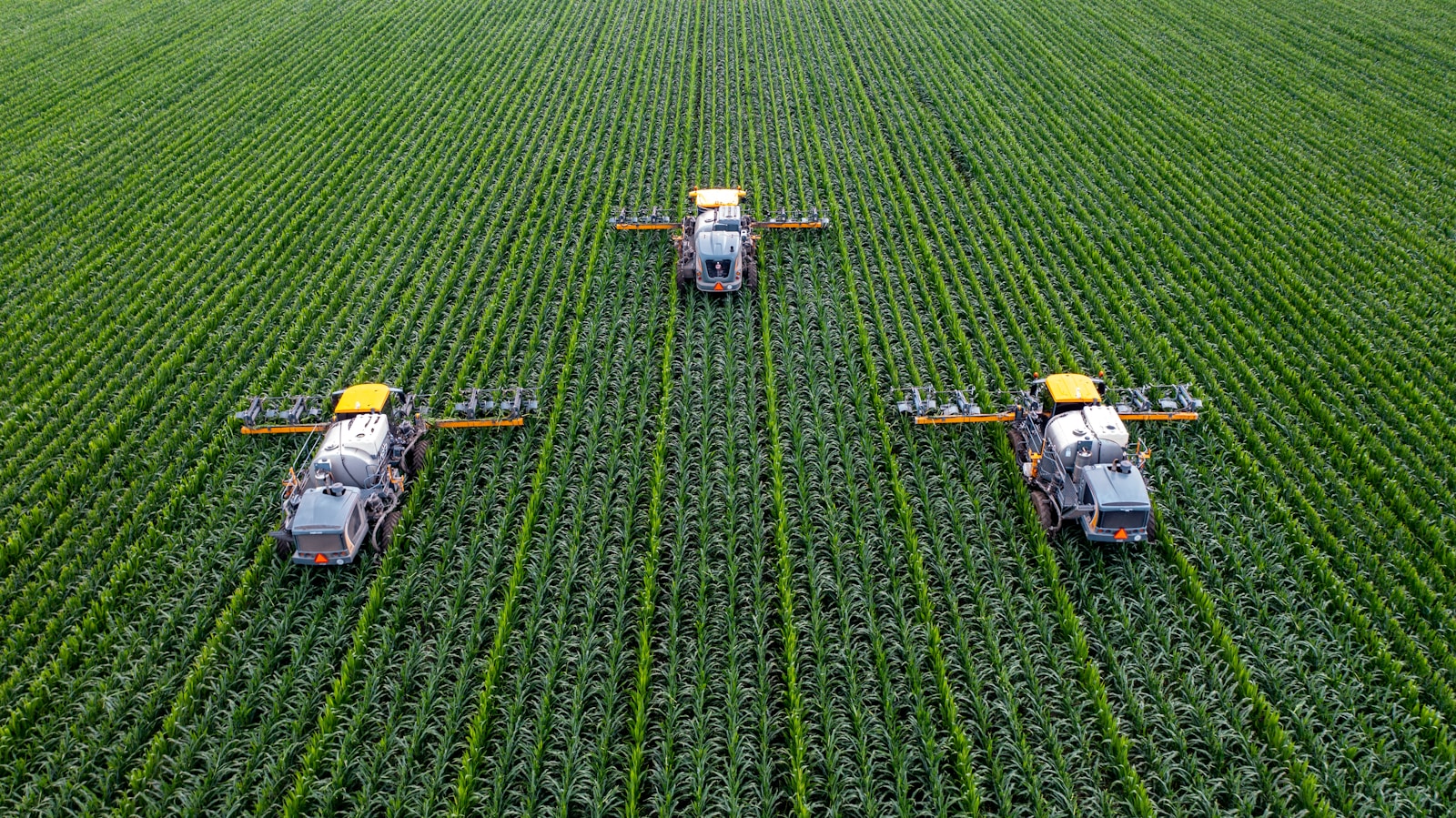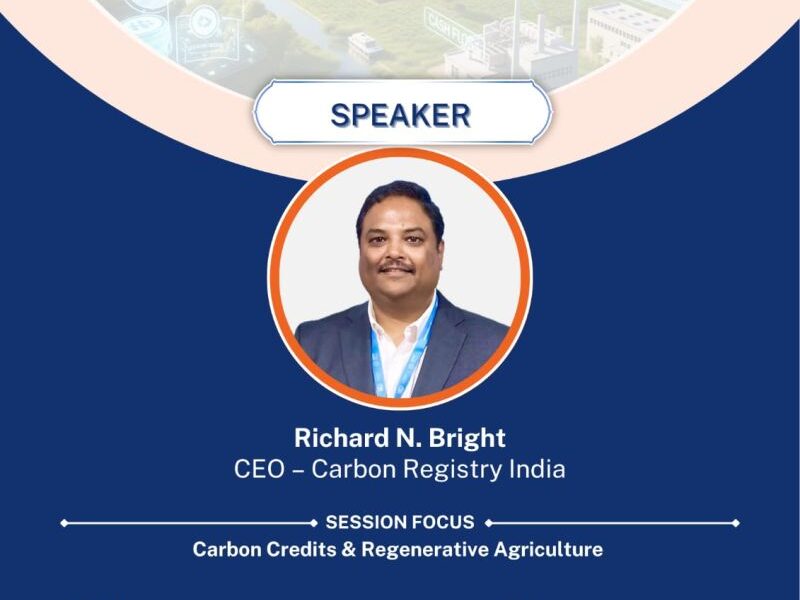Unlocking Resilience through Innovation, Collaboration and Carbon Finance
India, with its vast agricultural landscape and dependence on monsoon-driven cropping systems, is among the most climate-vulnerable countries in the world. The growing frequency and intensity of extreme weather events—droughts, floods, heatwaves, and cyclones—has begun to alter the very fabric of rural life, threatening food security, livelihoods, and long-term economic stability.
In this context, Climate Smart Agriculture (CSA) emerges as a strategic imperative. CSA is a holistic, systems-based approach that seeks to sustainably increase productivity, enhance resilience (adaptation), and reduce greenhouse gas (GHG) emissions where possible (mitigation), while ensuring food security and inclusive development. However, for CSA to succeed in India, it must be farmer-first, data-informed, and linked to both domestic and international climate finance mechanisms.
This is where Carbon Registry India (CR-I) and national institutions like APEDA, the Ministry of Agriculture and Farmers’ Welfare, ICAR, NHB, NOVOD, and others can play pivotal roles. Together, they can mainstream climate-smart practices, build robust measurement and verification systems, and channel carbon finance to the very farmers who are on the frontlines of climate change.
Why Climate-Smart Agriculture is Urgent for India
India’s agricultural sector is the backbone of its rural economy, employing over 50% of the population. Yet, it contributes nearly 15% of the country’s greenhouse gas emissions, largely from enteric fermentation, rice cultivation, and fertiliser usage. At the same time, Indian farmers are deeply vulnerable to climate variability:
- Unpredictable Monsoons: Erratic rainfall patterns are disrupting sowing cycles and reducing yields.
- Soil Degradation: Continuous cropping, imbalanced fertilisation, and poor organic matter management have degraded over 30% of India’s soils.
- Groundwater Depletion: Excessive water extraction, especially for paddy and sugarcane, is leading to unsustainable aquifer decline.
- Pest and Disease Emergence: Rising temperatures are enabling new pests and diseases, further endangering crop productivity.
CSA offers integrated solutions such as climate-resilient seeds, agroforestry, precision farming, organic inputs, alternate wetting and drying (AWD) in paddy, efficient irrigation, and intercropping—all of which help farmers adapt and reduce emissions simultaneously.
Role of Carbon Registry India (CR-I) in Enabling CSA
Carbon Registry India (CR-I) is designed to be a credible, transparent, and India-first carbon registry, supporting robust monitoring, reporting, and verification (MRV) of climate mitigation actions across sectors. In agriculture, CR-I can act as a bridge between grassroots innovation and carbon markets.
Here’s how CR-I contributes to climate-smart agriculture:
- Standardised Methodologies for Agriculture:
CR-I can develop or adapt region-specific carbon methodologies tailored to Indian cropping systems, agroecological zones, and farming practices (e.g., organic paddy, natural farming, agroforestry, conservation tillage, etc.). - MRV Systems for Smallholder Contexts:
Unlike industrial carbon projects, agricultural MRV must be cost-effective, inclusive, and scalable. CR-I is working to integrate technologies like remote sensing, drones, satellite imagery, and AI-driven soil carbon models to enable reliable and low-cost MRV. - Farmer Aggregation and Equity Focus:
CR-I encourages project models that are inclusive of farmer producer organisations (FPOs), cooperatives, and self-help groups, ensuring that smallholders are not excluded from carbon finance due to scale or technical capacity. - Transparency and Registry Access:
With a public registry and clear documentation protocols, CR-I ensures trust, accountability, and traceability of carbon credits—critical for both domestic offsetting and international voluntary markets. - Co-Benefit Accounting:
CSA interventions often yield multiple benefits—better soil health, water conservation, biodiversity, and nutrition. CR-I aims to capture these “co-benefits” in project registration, making a stronger case for impact-linked finance.
Role of National Institutions in Accelerating CSA
Multiple Indian government agencies are already engaged in agriculture, sustainability, and export promotion. Their alignment with CR-I and CSA objectives can significantly amplify outcomes.
1. APEDA (Agricultural and Processed Food Products Export Development Authority):
- APEDA supports organic and sustainable agriculture for export markets.
- It can collaborate with CR-I to create carbon-labelled supply chains that enhance India’s competitiveness in green markets.
- Exporters working with organic farmers can be incentivised to adopt CSA interventions and monetise carbon outcomes via CR-I.
2. Ministry of Agriculture and Farmers’ Welfare:
- The ministry is a key policymaker and can integrate CSA into schemes like PM-KUSUM, RKVY, and Paramparagat Krishi Vikas Yojana.
- By embedding MRV-ready practices into government programmes, it can pave the way for public-private carbon finance partnerships using CR-I as the registry.
3. Indian Council of Agricultural Research (ICAR):
- ICAR’s research institutions can validate CSA technologies and support the development of India-specific emission reduction baselines.
- Collaboration with CR-I can ensure that research findings translate into methodologically sound, field-level carbon projects.
4. National Horticulture Board (NHB):
- NHB promotes high-value horticulture crops, which are sensitive to climate impacts.
- CSA practices like micro-irrigation, mulching, and canopy management in horticulture can be standardized and carbon accounted through CR-I.
5. NOVOD (National Oilseeds and Vegetable Oils Development Board):
- Oilseeds are key to India’s nutritional security and import reduction strategy.
- NOVOD can champion regenerative practices in oilseed cultivation (e.g., no-till mustard, intercropping with legumes) and support climate-resilient, low-carbon production models eligible under CR-I frameworks.
The Way Forward: A Collaborative Ecosystem
Climate Smart Agriculture is not a one-size-fits-all solution. It must be co-created with farmers, scientists, civil society, and policymakers. The opportunity lies in building an ecosystem where farmers are knowledge partners, not just beneficiaries.
Carbon finance, when done right, can unlock new revenue streams for farmers while catalysing climate-resilient transitions. CR-I’s role is to ensure this is done with scientific rigour, equity, and transparency. When coupled with the institutional strength of APEDA, ICAR, and allied boards, India can create a globally relevant, locally rooted CSA ecosystem.
This approach will not only support India’s commitment to its Nationally Determined Contributions (NDCs) under the Paris Agreement but also ensure that the true custodians of climate resilience—the farmers—are empowered, rewarded, and resilient in the face of change.
Conclusion
As India walks the tightrope of ensuring food security, doubling farmer incomes, and meeting climate targets, Climate Smart Agriculture offers a balanced path forward. By integrating traditional wisdom with modern science, and by aligning national institutions with credible platforms like Carbon Registry India, the country can lead a farmer-first, climate-resilient agricultural revolution.
The time to act is now. Not only to adapt—but to thrive.


